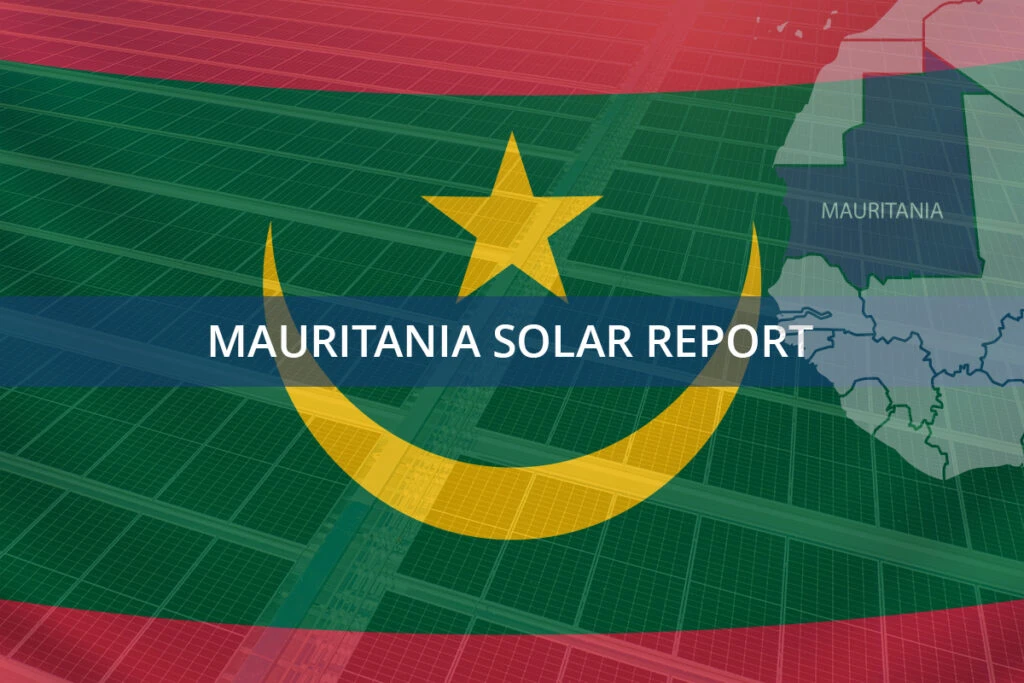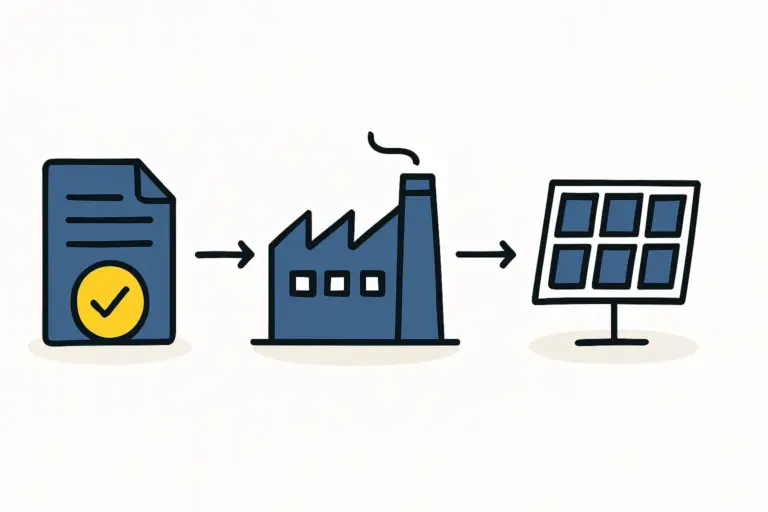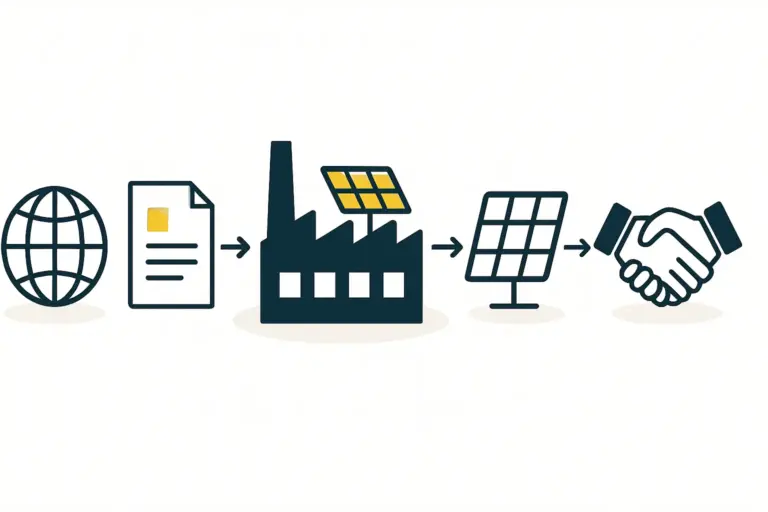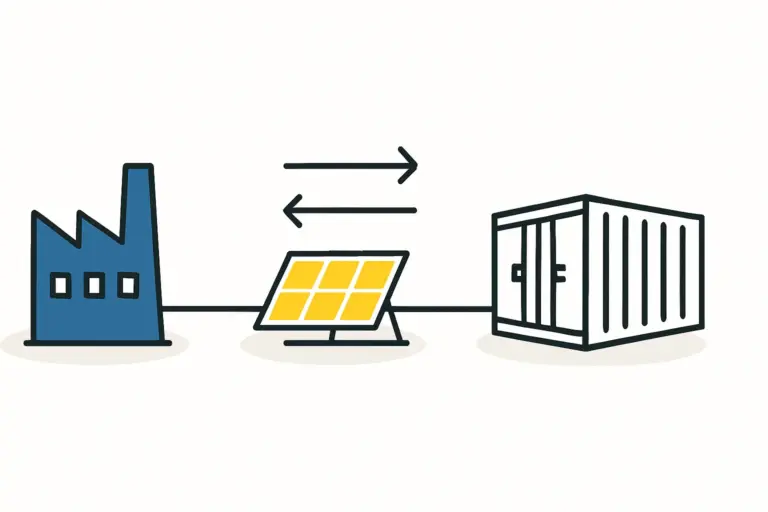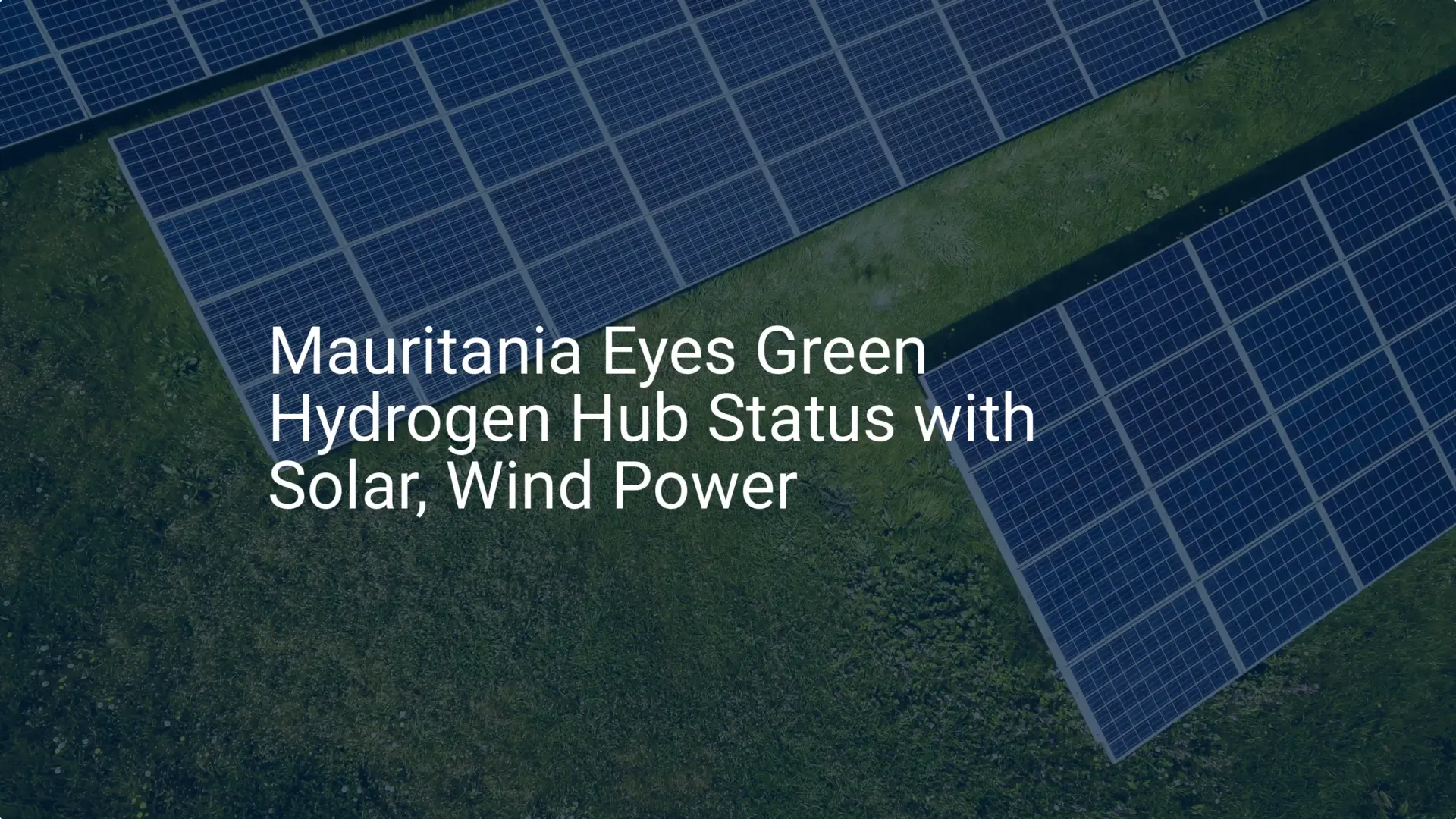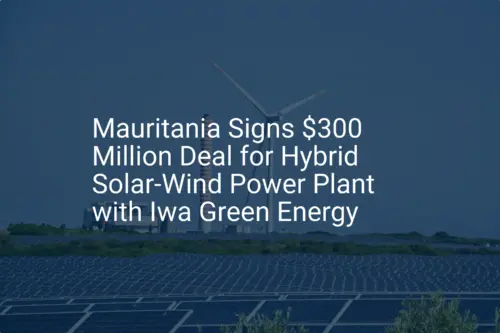It’s a compelling paradox: a factory built to produce solar modules, the very instruments of energy independence, is itself vulnerable to an unstable power supply.
For an entrepreneur launching a solar manufacturing plant in a place like Mauritania—a country with world-class solar resources but a developing electrical grid—this isn’t a theoretical problem. It is a central strategic challenge that can determine the success or failure of the entire venture.
Ensuring a consistent, high-quality power supply is as critical as sourcing raw materials or hiring skilled labor. Power interruptions, even for a few seconds, can halt production, spoil materials mid-process, and damage sensitive equipment, leading to significant financial losses. This article explores the essential considerations for powering a solar module factory in an environment with grid limitations, using Mauritania as a case study to outline the primary power supply strategies—from relying on the grid to creating a fully independent, hybrid energy system.
The Mauritanian Context: High Potential, Unique Challenges
Mauritania is one of the most promising locations globally for solar energy generation. With solar irradiation levels averaging an exceptional 2,300 kWh/m² per year, the country possesses a vast, untapped energy resource. The government has recognized this potential, setting ambitious goals to achieve universal electricity access by 2030 and have renewable sources make up 50% of its energy mix. Large-scale projects, like the 50 MW plant in Nouakchott, signal a clear direction.
This ambition, however, runs up against present-day realities. As of 2020, the national electrification rate was approximately 47%, and the existing grid often suffers from instability and outages. For an industrial operation like a solar factory, this poses a significant risk. Environmental factors such as high ambient temperatures and frequent sandstorms also demand robust engineering for any infrastructure, including the factory’s own power source. This combination of immense potential and practical challenges makes Mauritania a perfect illustration of why a well-defined energy strategy is paramount.

The Energy Demands of a Solar Module Factory
A common misconception is that a solar factory has modest energy needs. In reality, modern solar module manufacturing is an energy-intensive process. Key equipment—including laminators, stringers, and cell testers—consumes substantial power and requires a stable, uninterrupted supply to function correctly.
The machinery within a typical solar module facility creates a constant, significant electrical load. An unexpected power outage can have severe consequences:
-
Production Halts: An entire production run can be lost if a machine like a laminator loses power mid-cycle. The materials inside, worth thousands of dollars, could be ruined.
-
Equipment Damage: Sudden power surges or drops can damage sensitive electronic components in automated machinery, leading to costly repairs and extended downtime.
-
Quality Control Issues: Inconsistent power can affect the precise calibration of testing and measurement equipment, compromising the quality and certification of the final product.
For these reasons, planning the factory’s energy infrastructure cannot be an afterthought; it must be a core component of the initial business and operational plan.
Power Supply Strategies for a Mauritanian Factory
An investor has several strategic options for ensuring a reliable power supply. The optimal choice depends on the factory’s location, risk tolerance, and long-term financial plan.
Option 1: Sole Reliance on the National Grid
The simplest approach is to connect directly to the national grid. Given the known instability of many developing grids, however, this strategy carries the highest operational risk. The potential for frequent production stoppages makes it an unsuitable option for any serious industrial venture aiming for consistent output and quality.
Option 2: Grid-Tied with Conventional Backup
A more common strategy is to use the grid as the primary power source while installing diesel generators as a backup. While this provides a safety net against outages, it comes with its own set of challenges:
-
High Operating Costs: Diesel fuel is expensive, and its price can be volatile.
-
Logistical Complexity: This requires a reliable fuel supply chain, on-site storage, and regular generator maintenance.
-
Environmental Impact: This approach runs counter to the clean-energy mission of a solar panel factory.
Option 3: The Independent Hybrid Power Plant Solution
The most robust and forward-looking strategy is to develop a dedicated hybrid power system designed specifically for the factory’s needs. This approach effectively makes the factory its own primary utility, using the national grid as a backup rather than a primary source.
A typical hybrid system integrates several components:
-
On-site Solar PV Array: A large solar installation, often on the factory roof or adjacent land, serves as the main power source during daylight hours.
-
Battery Energy Storage System (BESS): Industrial-grade batteries store excess solar energy generated during the day. This stored energy powers the factory after sunset and during grid outages.
-
Grid Connection: The connection is maintained as a secondary backup, providing power during extended periods of low solar generation or when the BESS is depleted.
-
Backup Generator: A smaller diesel generator can be included as a final layer of redundancy for absolute operational security.
This integrated approach provides the highest level of energy security, minimizing reliance on the unstable grid and drastically reducing dependence on fossil fuels. Planning for such a system is an integral part of designing a turnkey solar production line, as the power infrastructure must be sized and configured to match the machinery’s specific load profile.
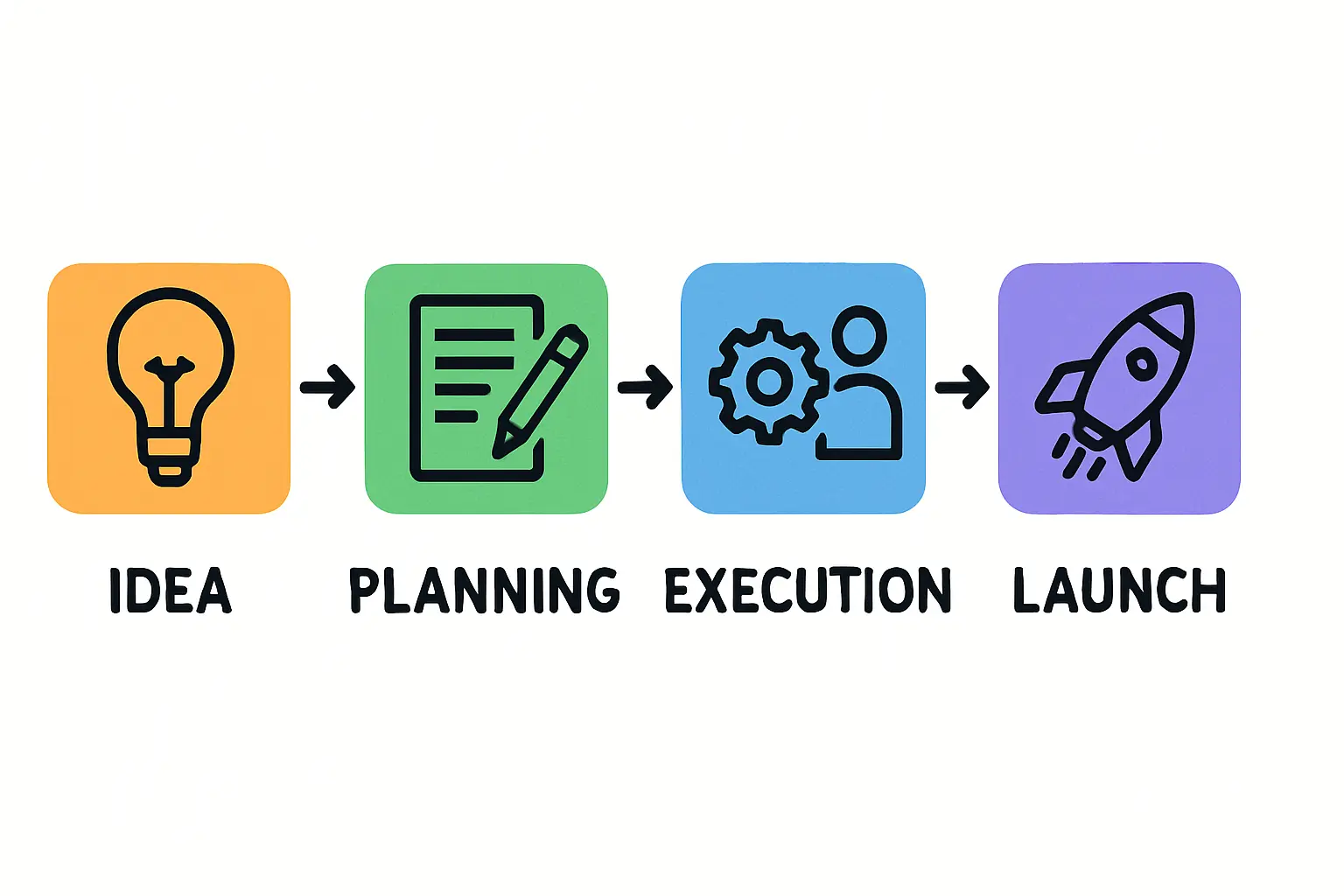
Financial and Operational Considerations
While a hybrid power plant requires a higher initial capital investment, it offers significant long-term financial advantages. The key metric to consider is the Levelized Cost of Energy (LCOE)—the average cost per kilowatt-hour of electricity generated by the system over its lifetime.
In many cases, the LCOE of a dedicated solar-plus-storage system can be lower than the cost of unreliable grid power combined with expensive diesel backup. The upfront investment is offset over time by minimal fuel costs, reduced energy bills, and, most importantly, the prevention of costly production downtime. Based on experience from J.v.G. turnkey projects, securing a stable power supply is consistently a top-three planning priority, alongside sourcing materials and training staff.
This financial analysis is critical for determining the overall viability of a solar factory. The physical requirements of the power system—such as the land or roof space for the solar array and the location of the battery storage—must also be integrated into the initial factory layout and planning.

Frequently Asked Questions (FAQ)
What is the typical power consumption of a 50 MW solar factory?
A semi-automated factory with a 50 MW annual capacity typically requires a peak power supply of 250 to 400 kW, depending on the specific machinery used.
How large would the factory’s own solar array need to be?
To power a 50 MW factory and charge a battery system, a dedicated solar array would likely need to be in the range of 1 to 1.5 MWp (megawatt-peak), requiring approximately 10,000 to 15,000 square meters of space.
Can a factory be powered by the very solar panels it produces?
While appealing, this isn’t practical for initial operations. A factory needs a fully operational and reliable power source from day one. The panels it produces must first be certified and sold to generate revenue. Later, a factory could certainly use its own certified products for system expansions.
Does a hybrid system mean the factory is completely off-grid?
Not necessarily. While it can be designed to operate completely off-grid, maintaining a grid connection provides a valuable layer of redundancy. The hybrid model offers the flexibility to draw from the grid only when it is economically or technically advantageous.
Conclusion: Securing Your Investment Through Energy Independence
For entrepreneurs venturing into solar manufacturing in markets like Mauritania, the question is not whether to consider the factory’s power supply, but how to engineer it for maximum resilience and long-term profitability. Sole reliance on a developing grid introduces an unacceptable level of business risk.
The optimal solution is a hybrid power system that leverages the region’s primary resource—the sun—to create a stable, cost-effective, and independent energy source. This approach transforms a potential vulnerability into a strategic asset, ensuring the facility built to advance the energy transition is itself a model of reliability and foresight. A detailed energy plan is therefore a non-negotiable component of a sound business strategy, safeguarding the investment and paving the way for operational success.

